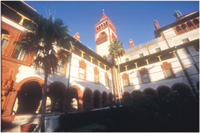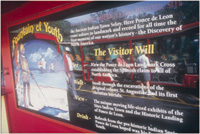Sigma Wide Angle Zoom
AF 15 to 30mm f3.5 to 4.5 EX DG Aspherical And AF 20 to 40mm f2.8 EX DG Aspherical
The Sigma engineers never seem to take a break, coming up with new lenses with surprising frequency. Late last year, they released two short zooms that certainly attracted a lot of attention. Their AF 15-30mm f/3.5-4.5 EX DG Aspherical boasts the shortest focal length of any zoom on the market, at the time of this writing. The new AF 20-40mm f/2.8 EX DG Aspherical is less unusual but includes the longest focal length of any f/2.8 ultra-wide zoom. The 20-35mm zooms are common, and two camera manufacturers offer a 17-35mm f/2.8 model, but some photographers want a zoom with even wider angles of view. Because many digital SLRs multiply focal length by 1.5x or 1.6x, few zoom lenses provide a very wide angle effect with such cameras. The shorter focal lengths of the Sigma 15-30mm will do so, making it ideal for digital photographers. Naturally, a 15-30mm zoom is also great with a conventional SLR camera for creating super wide angle effects. I tested the Sigma zooms with an EOS-3 and a 550EX Speedlite while shooting stock images in central Florida. They proved to be fully compatible with all of the high tech capabilities of both Canon models. The flash unit could not cover the super wide field of view of the 15mm and 16mm focal length, so in dark locations I used only available light at these settings. When using flash outdoors, this was not a problem. Because the sun provided most of the light, the 550EX with its wide angle adapter produced excellent fill flash without any obvious darkening at the edges of the image. |
||||||||||||||||||
|







































